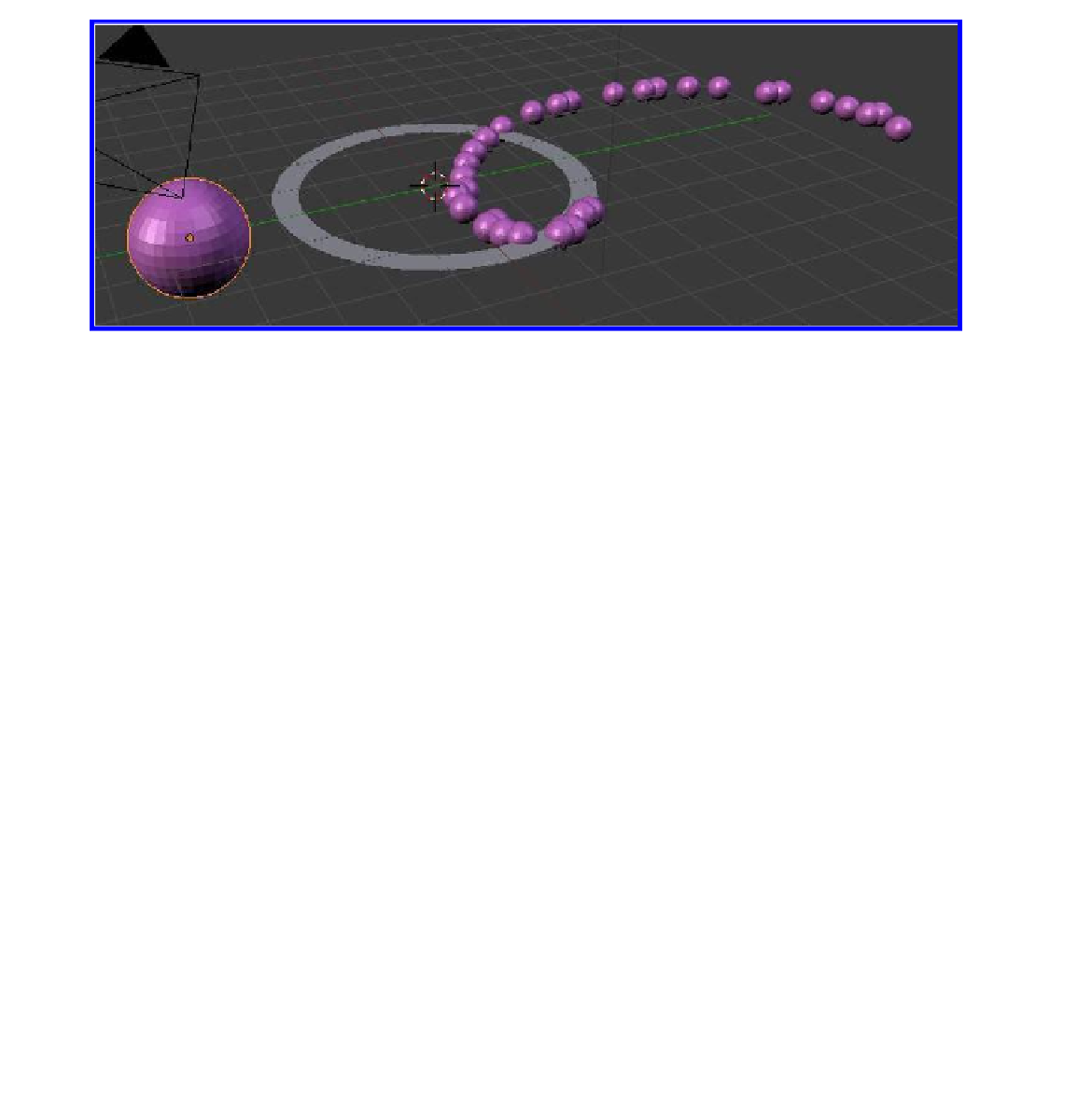Graphics Programs Reference
In-Depth Information
Figure 13.22
and increase the “Size” value to increase the size of the tiny spheres in the 3D window.
Render to see an image of the spheres.
Up to now everything created and rendered has been the default dull gray color. Add-
ing a new material color to the sphere will cause the array of spheres to display and render
in that material color (Figure 13.22). Adding a material to the ring in the 3D window will
cause the particles with a halo value to render in that material color.
This demonstration of particle system applications has only shown the tip of the iceberg.
We must now delve into a detailed study of the “Particles” button to ascertain the function
of each tab and formulate the logic of the particle systems interface. There are many excel-
lent tutorials available online to complement this study (see the References section), and it
is recommended that you attain a full understanding of the buttons to allow for the transi-
tion from an operator of the program to a creative artist.
13.3 Particle Settings and Material Influence
We will continue the study of the particle system by examining the particle settings and
material influence and seeing how settings are entered to create effects. The possible ef-
fects that can be created are endless and only limited by the imagination: particles can be
deflected off other objects, blown by the wind, displayed before they are built, and much
more. It would be impossible to demonstrate everything and only by experimentation and
recording settings for future use will you become proficient. Remember that a particular
effect can be saved as a Blender file, which can be imported into a scene in another Blender
file. When you create something interesting, it's worth saving and recording for future use.
Blender doesn't come prepacked with instant goodies, so the objective for a Blender artist
should be to compile an extensive library.
The particle settings are controlled by the “Particles” button, which consists of a series
of tabs housing buttons and sliders allowing values to be entered (Figure 13.23). As we
have already seen, Blender automatically creates a particle system when the “Add” button is
pressed. Now, we must modify that system to produce the particular effect that we require.
The system is then saved to a cache to be used.


